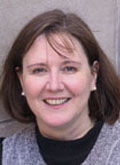Anne Mosher, Ph.D – Associate Professor, Geography, Maxwell School of Citizenship and Public Affairs
 As a member of the University Senate’s Committee on Instruction, in 2013-14 I formally reviewed the final report issued by the Vice Chancellor’s “Advancing New Pedagogies Task Force.” The headline messages of that document are clear. First, there is a great deal of ad hoc, in-the-trenches, faculty/instructor-led instructional innovation taking place at SU. We are not laggards. Second, there are several extant university-provided faculty development initiatives intended to make those ad hoc innovations ‘go viral’ on campus (e.g. SITETL—the Summer Institute for Technology Enhanced Teaching and Learning). The problem, the Task Force noted, is that either faculty do not know about the formal initiatives, understand why they might be useful, or see incentives to participate in them. Campus-wide diffusion, therefore, has been slow.
As a member of the University Senate’s Committee on Instruction, in 2013-14 I formally reviewed the final report issued by the Vice Chancellor’s “Advancing New Pedagogies Task Force.” The headline messages of that document are clear. First, there is a great deal of ad hoc, in-the-trenches, faculty/instructor-led instructional innovation taking place at SU. We are not laggards. Second, there are several extant university-provided faculty development initiatives intended to make those ad hoc innovations ‘go viral’ on campus (e.g. SITETL—the Summer Institute for Technology Enhanced Teaching and Learning). The problem, the Task Force noted, is that either faculty do not know about the formal initiatives, understand why they might be useful, or see incentives to participate in them. Campus-wide diffusion, therefore, has been slow.
After reflecting on this, the Senate Committee on Instruction further concluded that varying emphasis placed on instructional issues across Schools, Colleges, Departments and Programs has also inhibited diffusion. Units that engage in collective discussion about instruction are more likely to consider new pedagogical models (e.g. active learning) and technologies (e.g. Adobe Connect for classroom flipping) for adoption. They are also more likely to participate in faculty development opportunities, like SITETL. To bring this home a bit, the fact that three out of eighteen participants in SITETL ’14 Session II were from Geography says something about the degree to which instructional effectiveness and ensuring a rich campus-based learning experience matters within our department culture. Instruction is a topic that gets discussed on a frequent basis, informally and formally, particularly around grad student and tenure-track faculty mentoring. We could, however, be talking about it a lot more.
I had a very positive SITETL experience. In a way, it was like being immersed in a living version of the Advancing New Pedagogies Report. Over five days, eighteen faculty (led by eight facilitators from the Office of Academic Affairs, the Online Learning Services Group, and University College):
1) engaged in dialogue about active learning as a pedagogical model,
2) received hand’s-on instruction in various new learning technologies (including, but moving beyond, “clickers”)
3) presented personal summary visions for how to incorporate active learning and digital learning technologies into existing campus-based courses.
I explored two enhancements to my courses. The first is a student peer-review evaluation component for the term-paper project (“Federal-State-Local Partnerships in Infrastructure Provision”) in GEO 313: The United States. It will use the group-work management tool catme.org, the evaluation rubric function in Blackboard, the editing and feedback functions in Google Docs, and the content sharing features of Blackboard. Formalized student peer-review was suggested by students last year who really enjoyed learning about the other term papers being developed in the class during the in-class research/writing workshops I hold. They expressed a desire to play more of a formal feedback role in this process. They also suggested that there might be value in using the term papers as case studies over which they could be tested in the final exam. The facilitators from Online Learning Services helped me see how this might be done using the aforementioned technologies.
The second enhancement is to GEO 491: Senior Seminar in Geography. For the group capstone project this fall, I will have the class learn Expressions (SU’s customized version of WordPress, a website/blogging platform) to create an undergraduate-oriented Geography Department website. The students will be charged with formulating terms of service and use, designing a site map, dividing into working groups, generating content (including video), and devising a plan to keep the website sustainable. This will encourage them to reflect on the discipline as a whole, its role in society, and to see and express to others SU Geography’s uniqueness. It will also allow them to play to their existing talents—as GIS technicians, fieldworkers, writers, political activists—who have specialized in various facets of the field—urban, environmental, GIS, economic, political, historical, etc. Again, the staff at Online Learning Services is poised to help me do the technical training that will make this possible. In the process, the students will be gaining (or applying existing) digital technology skills.
One of the hopes behind SITETL is that each faculty participant will take what they’ve learned back to their departments/units and share it. Jamie Winders, Jane Read, Bob Wilson and I have agreed to make that happen in Geography this coming year. This will be a way to augment ongoing discussions regarding graduate student and faculty development. At the same time, every faculty person should be encouraged to apply and participate in the actual institute. Furthermore, Online Learning Services should be invited to:
- help us review what we already do in the department with teaching technologies
- lead brainstorming sessions over what we would like to do instructionally in the future.
This would help us identify key areas of instruction in which digital information technologies could be adopted.
-Anne Mosher, Ph.D
Associate Professor, Geography
Syracuse University
